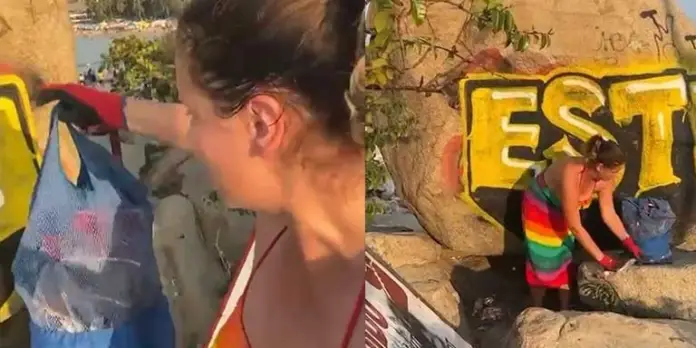The long-awaited opening of the Highway to the Oaxacan Coast has transformed Puerto Escondido into a tourist epicenter. With it has come an economic spillover that benefits entrepreneurs, merchants and service providers. However, behind the tourist boom, serious problems emerge that question the sustainability of this growth: saturation of roads, gentrification and, above all, an environmental crisis that threatens the natural balance of the region.
THE COMPLAINT
The most recent complaint came from the voice of a foreign activist, belonging to the environmental civil organization ekodolan.org, who, in a video circulating on social networks, expressed her indignation at the accumulation of garbage on the beaches of Puerto Escondido.
“How dirty Puerto Escondido is. We are collecting, first day of the year, less than five minutes on the beach,” she says with evident frustration while showing a bag full of solid waste collected in a short period of time.
A CALL TO CONSCIENCE
The video continues with images of waste scattered among rocks and areas frequented by fishermen.
“How can we live like this? We can’t do this. We are collecting,” declares the activist, questioning the lack of responsibility of those who visit and inhabit the place.
The activist underlines the seriousness of the problem by connecting the pollution with the livelihood of local fishermen:
“There are fishermen here, they all live off fish, they all eat fish. But what do the fish eat? This trash that people leave behind,” she concludes, leaving in the air a disturbing reflection on the impact of solid waste on marine fauna and human health.
WASTE CRISIS: A STATE PROBLEM
The proliferation of trash is not a phenomenon exclusive to Puerto Escondido. This problem reflects a structural failure at the state level, where effective plans for solid waste management have not been designed or implemented. Lack of environmental awareness among locals and tourists, coupled with insufficient planning, is leading to a crisis that could compromise not only the beauty of the destination, but also its ability to remain an economic driver.
TOURISM AS A TOOL FOR CHANGE
The solution does not only lie with the authorities. The activist made a direct call to the community and tourists to join in the clean-up efforts and lead by example.
“We have to set an example and have a little awareness, right?” she emphasized.
While tourism growth is an economic opportunity, it should also be a reminder that everyone involved, from visitors to residents, has a responsibility to preserve this unique destination.
WHERE ARE WE GOING?
The case of Puerto Escondido raises urgent questions:
What environmental policies are needed to protect this and other tourist destinations in Oaxaca? How can the government balance economic growth with sustainability? Are we as a society willing to assume our responsibility to the environment?
Ultimately, if immediate action is not taken, the trash crisis could erode not only Puerto Escondido’s reputation but also its natural appeal, exposing the true price of mismanaged development.
Source: imaprcialoaxaca




